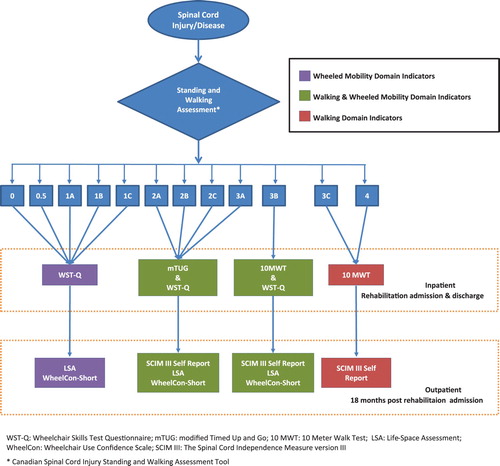Figures & data
Figure 1 Walking Domain Driver diagram. UEMS: Upper-Extremity Motor Score; LEMS: Lower-Extremity Motor Score; NLI: Neurological Level of Injury; AIS: ASIA Impairment Scale; HR: Heart Rate; BP: Blood Pressure; 4-AP: 4-Aminopyridine; FES: Functional Electrical Stimulation; FET: Functional Electrical Training; PSW: Personal Support Worker.

Table 1 Canadian SCI Standing and Walking Assessment Toolkit (SWAT) Stages of Walking Recovery ©RHSCIR Canadian SCI Standing and Walking Module Group on behalf of Rick Hansen Institute, 2014.
Table 2 List of walking outcome measures.
Table 3 Taxonomy of walking interventions for process indicator tracking.
Table 4 Selected structure, process and outcome indicators for the Walking Domain, and the related denominator for calculating the indicator and the time of collection.
Figure 2 SCI-High Walking and Wheeled Mobility Domain indicator decision tree. Appropriate indicator data collection in based on the patient's stage of standing and walking recovery ascertained using the Canadian SCI Standing and Walking Assessment Tool.Citation17 The Figure is intended to help clinicians decide when it is appropriate or not to collect Walking or Wheeled Mobility indicators, or both, based on the individual's stage of standing and walking recovery.

